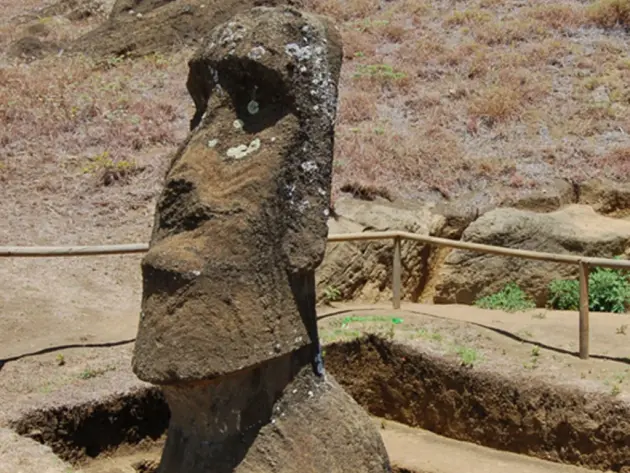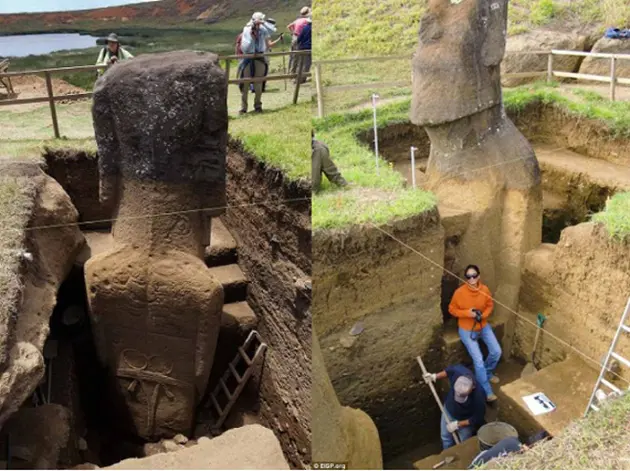Almost everyone has seen the iconic images of the giant heads on Easter Island. What you might not know is that these heads actually have bodies buried underground. Archaeologists have discovered these bodies connected to the statues, uncovering fascinating findings that offer deeper insights into the Easter Island civilization and how they created these monolithic structures.

The statues on Easter Island are called Moai by the Rapa Nui people, who carved them on this tropical South Pacific island, just west of Chile. The Moai, sculpted from volcanic stone found on the island, date back to between 1100 and 1500 CE. (As a side note, CE stands for “Common Era,” a term often used in historical and archaeological communities as an alternative to AD.)

Like many other objects on Earth, the passage of time has left its mark on the statues. Sediment and rock have gradually buried and preserved the bodies beneath the famous heads of Easter Island. A team of archaeologists from UCLA has since initiated the Easter Island Statue Project to better study and preserve these artifacts. Through their efforts, the team has excavated some of the statues, revealing the hidden bodies underneath.

In total, the team has documented and studied nearly 1,000 statues on this small Pacific island. Over nine years, they worked to determine the purpose, function, and history of each statue.
After gaining approval, the archaeologists excavated two of the statues, exposing their torsos and truncated waists. The statues had been covered by layers of sediment transported across the island over time, burying their lower halves. These natural events, combined with centuries of weathering and erosion, gradually concealed the statues down to their heads.

Easter Island is located on the Nazca Plate and is a volcanic hotspot, similar to the Hawaiian island chain. This hotspot created the Sala y Gomez Ridge, which stretches east of Easter Island as the Pacific Plate slowly moves over the East Pacific Rise.
Easter Island was formed by successive Pliocene and Holocene volcanic flows composed of basalt and andesite. Additionally, volcanic tuff deposits within a crater served as the primary material used to carve the monolithic Moai statues. Most of these statues are located along the slopes of the Rano Raraku volcanic cone, which acted as the quarry for the Rapa Nui people.

During the excavation, the team discovered glyphs carved onto the backs of the statues. These glyphs often took the form of crescent shapes, symbolizing Polynesian canoes. These motifs likely represented the family or clan of the sculptor, offering clues about familial or social structures within the island community.
To carve and erect the statues, the Rapa Nui used large wooden logs placed into deep holes beside the statues. They then used ropes and these logs to haul the statues upright. The Rapa Nui carved the heads and front surfaces of the statues while they lay on the ground, completing the backs only after they had been raised into position. The tallest of the three statues uncovered so far stands at 33 feet and is known as Paro.

Abundant red pigment has been found at the burial sites of some individuals near the statues, suggesting that the Moai might have been painted red during certain rituals. Burial sites often surrounded the statues, indicating that the Rapa Nui likely buried their deceased alongside family statues.






